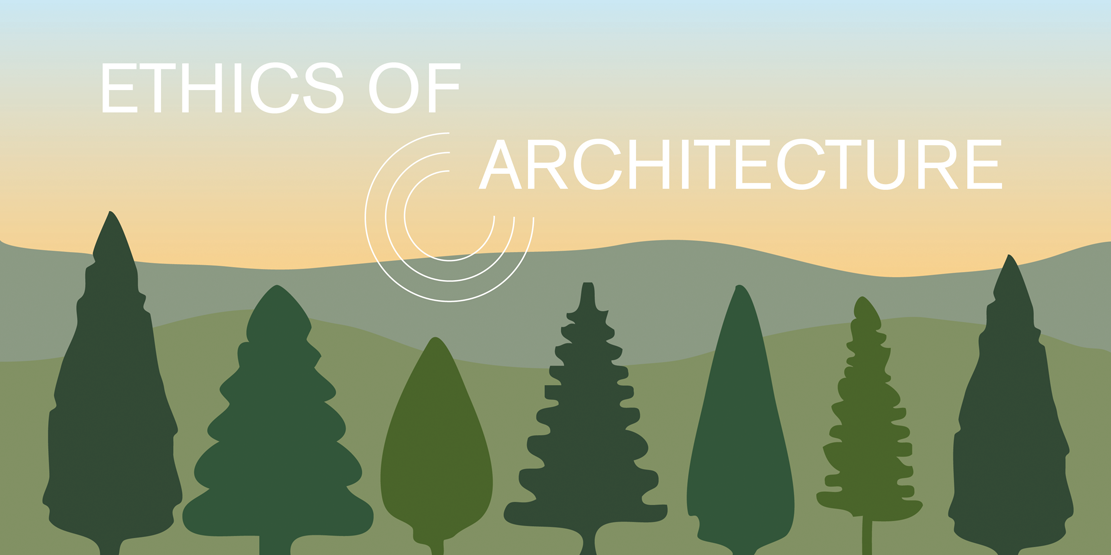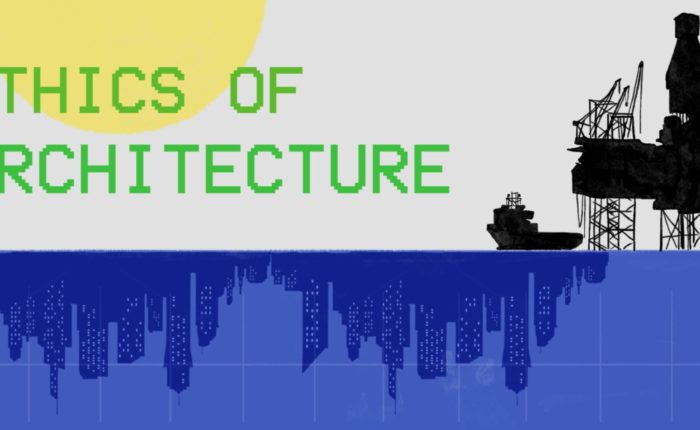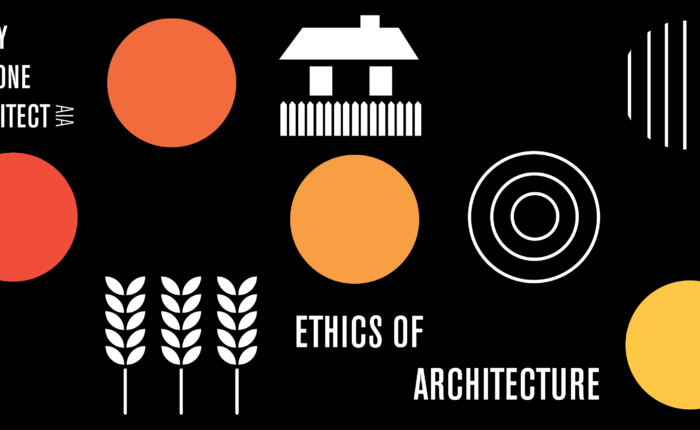As you may have noticed from our previous newsletters, we have signed on to the “Architects Declare” manifesto demanding urgent climate action within the design and building sectors. For more information on the manifesto and the movement, visit: us.architectsdeclare.com.
Our last blog article reviewed 6 Simple Ways to Reduce Your Home’s Carbon Footprint. Next stop on our “Ethics of Architecture” journey is the world of building materials and how to make informed decisions about the materials we choose. First up? Wood.
Renewable and beneficial to society (if obtained correctly)
Over the past few years, we’ve found ourselves looking at locally-sourced wood as a truly sustainable building material. After all, trees do grow back and have a lighter carbon footprint than steel or concrete. As long as forests are harvested responsibly (more on that later), forests will be around for a long time to provide us with building materials and offer other benefits to the environment, such as:
- Producing oxygen and absorbing carbon dioxide
- Filtering air and reducing smog
- Preventing soil erosion and helping soil retain water
- Maintaining clean rivers and streams
Forests are truly amazing
Tracy recently finished reading “The Overstory: A Novel” by Richard Powers. In it, Powers writes poignantly about a revolution that has been taking place in the scientific study of how trees interact with each other. Apparently, in a forest, “trees of the same species are communal, and will often form alliances with trees of other species.” Forest trees have evolved to live in cooperative, interdependent relationships, maintained by communication and a collective intelligence similar to an insect colony. These soaring columns of living wood draw the eye upward to their outspreading crowns, but the real action is taking place underground, just a few inches below our feet.
All the trees, in every forest that is not too damaged, are connected to each other through underground fungal networks. Trees share water and nutrients through these networks, and also use the networks to communicate. The trees send distress signals about drought and disease, for example, or about insect attacks, and other trees alter their behavior when they receive these messages. (1)
Monocultures and clear cutting are not amazing (or sustainable)
Unfortunately, throughout much of the world, forests have been valued only for the number of board feet of lumber that can be extracted from the forest as quickly as possible. Much of our construction lumber is extracted using this approach, generally known as clear-cutting. In this method, entire forests are cleared at a time, leaving the land bare, with no tree roots to hold the soil in place when it rains. Valuable, nutrient-rich topsoil runs off into adjacent waterways, making those waterways less habitable for fish, or the topsoil blows away in the wind.
What replaces the forest is generally a tree plantation – a monoculture environment where the diversity of a living forest is replaced by regimented rows of single species plantings. Studies have shown that these artificial forests have a negative impact on climate change: “Old growth forests store carbon for centuries, whereas plantations and young forests are actually net emitters of carbon due to the disturbance of soils and the degradation of the previous ecosystem.” (2)
There is a better way
Sustainably-managed forests can produce great amounts of lumber while maintaining biodiversity and soil health and can continue to act as carbon sinks. According to the Rainforest Alliance (3), “The hallmark of sustainable forestry, from a purely ecological perspective, is the extent to which forestry practices mimic natural patterns of disturbance and regeneration. Sustainable forestry balances the needs of the environment, wildlife, and forest communities—supporting decent incomes while conserving our forests for future generations.” The primary tools for this are selective harvesting and limited, small-scale clear-cutting that can mimic natural events such as landslides or fires. The management plan depends on the growth and regeneration rates of the various species of wood in the forest. Ideally some old-growth trees are left untouched.
How can we make the right choices?
-
Use FSC-certified wood
The Rainforest Alliance co-founded the Forest Stewardship Council (FSC) in 1993. Lumber from FSC-certified forests can readily be found for sale in stores, including Home Depot. The critical component to note in identifying and purchasing FSC-certified wood is the “chain of custody” certificate that ensures the wood has come from a well-managed forest.
-
Opt for Engineered Lumber
The more we can minimize the use of large, solid-stock timber in our buildings, the more old-growth trees we can save. Engineered lumber products such as I-Joists, LVL (laminated veneer lumber), and PSL (Parallel-strand lumber), are comprised of smaller-scale wood members glued together. These products can be created using wood from younger trees. Bonus: they tend to be stronger than solid-stock lumber, too!
-
Avoid Endangered or Threatened Wood Species
Who needs mahogany when you can get beautiful, FSC-certified walnut? Stay away from using or specifying finish lumber from endangered or threatened wood species from tropical rainforests (mahogany, black ebony, ipe/brazilian walnut, zebra wood, etc.). Endangered U.S.-based woods include California’s iconic coast redwoods, giant sequoias, and Fraser Fir (yes – your favorite type of Christmas tree!).
The lingering question: should we be using wood for construction?
The answer is a qualified “Yes.” Wood is natural and sustainable, and the only renewable building material available. With one small shift to FSC-certified products, we can feel better about contributing positively to the environment and helping to combat climate change.
Find more information on how to find FSC-certified products here: https://us.fsc.org/en-us/market/find-products
To catch up on our recent posts, check them out here:
SOURCES
1 – https://www.smithsonianmag.com/science-nature/the-whispering-trees-180968084/
3 – https://www.rainforest-alliance.org/articles/what-is-sustainable-forestry



